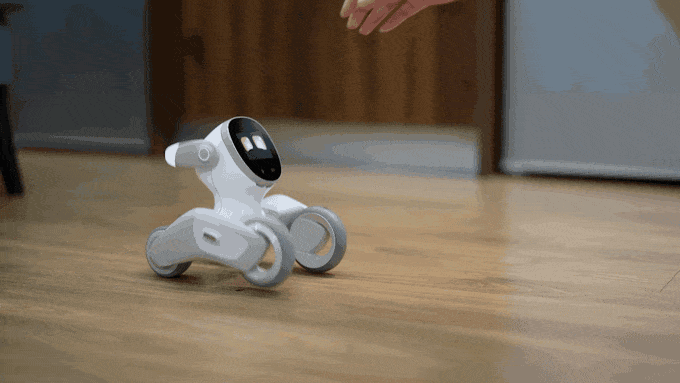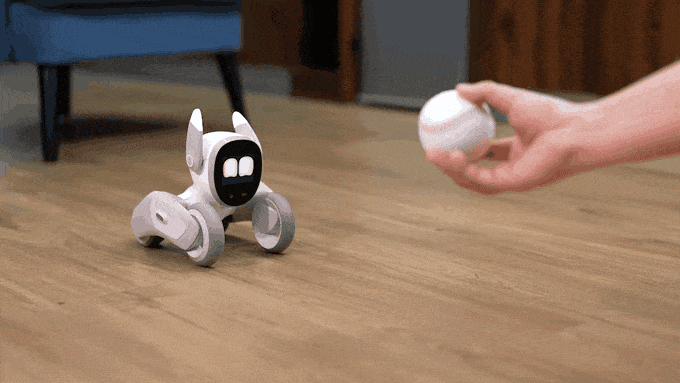Like a number of attendees, I was taken with ClicBot when I first saw it a few CESes ago. We’re all up to our ears in “educational” robotics kits. STEM learning is important, of course, but the last several years have seen a veritable explosion in these sorts of toys, and your mileage is going to vary a good bit, based on the line.
What really caught my eye, however, what the robot’s expressiveness. Anki’s last big contribution to the consumer robotics space was effectively incorporating animated characteristics into a real-world robot. By employing a team of former Pixar and DreamWorks animators, the company effectively leveraged the extreme expressiveness of characters’ eyes, sounds and movement.

Image Credits: KEYi Tech
People were understandably quick to label Cosmo as “real like WALL-E” for the above reasons. Ultimately, broader market forces intervened and Anki went under. But the company’s legacy continues in a meaningful way through subsequent cracks at the home robotics market, including, most notably, Amazon’s Astro.
Naturally, I compared ClicBot to Cozmo. The headline asked (and answered) whether ClicBot was a spiritual successor to Anki’s best-known product. “Mostly no, but maybe a little yes” is how I put it at the time. With KEYi Tech’s new robot, however, it’s frankly undeniable (I mean it this time, folks). With Loona, the company trades ClicBot’s modular buildability for some truly impressive moves — so much so I emailed the company for some raw video to make sure I wasn’t watching renders.
The little wheeled robot — which went live on Kickstarter today (and quickly blew past its $20,000 goal) — arrives in a very similar form factor to Cozmo. But its moves are among the most fluid I’ve ever seen from a consumer robot. While the ’bot is nowhere near the price of Astro, it’s not cheap, retailing for $449. Earlier backers, however, will be able to score one for closer to Anki’s pricing, at $269-299. Obviously all of the usual crowdfunding risks apply here.

Image Credits: KEYi Tech
The robot has a number of sensors on board, allowing it to interact with users via facial, movement, body, object, gesture, voice and “emotion” recognition. It has edge detection on board, as well, so it doesn’t drive off the counter, and trajectory planning for better navigation. Fittingly, the company is hoping to have the first batch shipped to backers in time for the holidays.
Anki’s spiritual successor hits Kickstarter with some impressive moves by Brian Heater originally published on TechCrunch




